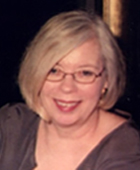The American Association for the Advancement of Science has recognized a Wayne State University School of Medicine faculty member with one of its highest honors.
The AAAS, the world’s largest general scientific society and publisher of the Science family of journals, named Bonnie Sloane, Ph.D., distinguished professor and former chair of the Department of Pharmacology, a member of its Class of 2021 fellows.

Election as a fellow honors members whose efforts on behalf of the advancement of science or its applications in service to society have distinguished them among peers and colleagues.
“I am pleased and honored to have been recognized as an AAAS fellow. This award is a recognition of the community in which I have worked and that provided support, advice and friendship: doctoral students in the Department of Pharmacology and the Cancer Biology Graduate Programs; postdoctoral students, visiting scientists and Fulbright and Fogarty fellows; research assistants and associates in our lab; staff in the Department of Pharmacology; colleagues in the basic science and clinical departments of the School of Medicine and other colleges of Wayne State University; and our many scientific colleagues around the world,” said Dr. Sloane, who served as chair of Pharmacology from 1996 to 2016.
“I would especially like to thank Dr. Robert Sokol, who, as dean of the School of Medicine, instituted a competitive internal program to upgrade research instrumentation. Through this program we obtained a confocal microscope that was the foundation for our research program and the present Microscopy, Imaging and Cytometry Resources Core of the university,” she added.
Dr. Sloane joins a storied list of AAAS fellows that dates back to 1874 and includes civil rights activist W.E.B. Du Bois, veteran astronaut Ellen Ochoa, Nobel laureate and former secretary of Energy Steven Chu and United States Navy Rear Admiral Grace Hopper, who co-wrote the COBOL programming language and was instrumental in bringing the first commercial computer to market.
Members of the AAAS can be considered for the rank of fellow if nominated by the steering groups of the association’s 24 sections across scientific and engineering disciplines, by three fellows who are AAAS members, or by the association’s chief executive officer. Each steering group reviews nominations within its respective section and a final list is forwarded to the AAAS Council, which votes on the aggregate list.
Dr. Sloane's laboratory has a longstanding interest in the roles of proteolytic pathways in development and progression of cancer, with an emphasis on the progression of premalignant breast disease to invasive carcinomas. Her research group has established a role for lysosomal proteases, primarily the cysteine protease cathepsin B, and the endogenous inhibitors of cysteine cathepsins in malignant progression. They were the first group to uncover molecular mechanisms for the increased expression of cathepsin B in human tumors and to identify binding partners responsible for alterations in localization of cathepsin B in tumors. This includes the association of cathepsin B with caveolae on the cell surface via the direct binding of procathepsin B to S100A10, p11 or the light chain of the annexin II heterotetramer, in complex with the heavy chain annexin II.
The Sloane group has been a leader in applying live-cell imaging to proteases to exploit the potential of proteases as biomarkers, therapeutic targets or surrogate endpoints. They established new assays to follow proteolysis by live human breast cells in real time as they form 3D structures in matrices and migrate through the matrices, thus analyzing proteolysis in 4D (3D + time). They have employed these assays to follow the interactions among breast tumor cells and tumor-associated cells to determine whether the various cellular components comprising a tumor use proteolysis to perform their functions, the contributions of non-cellular components of the tumor microenvironment to tumor proteolysis and invasion, and the contributions of cell interactions to tumor proteolysis and invasion.